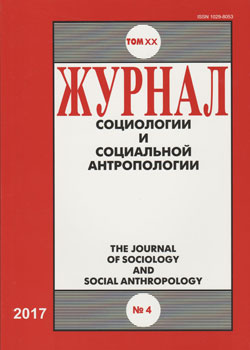Visual Language of the “Red” and “White” Russian Civil War Posters
Keywords:
political propaganda; Russian Civil War; posters; visual language; images
Abstract
The first decades of the twentieth century became the period of the rapid mass persuasion advancement in Russia; and therefore, the years of the October Revolution and Russian Civil War (1917–1922) can be regarded as the time of ideological practices accumulation which is important in understanding of the visual propaganda mechanisms. One of the main ideological weapon at the beginning of the 20th century was political poster. The poster visual patterns help to understand how the boundaries between social groups that used to form one national country have strengthened. Poster designers of both sides — the Reds and the Whites — used the signs of several visual paradigms of the early 20th century. These were the icon, the lubok, the caricature, the avant-garde art. Most importantly, that the language of images not only supports communication, but it also models the reality. Signs of different languages manage the world mapping. "Red" posters often modeled the image of the future society by the language of avant-garde art; while the "white" poster designers had not such graphic language for describing the future although they had a very expressive language for describing the calamities of the country. The author suggests that the range of symbols which were used in posters creation had an impact on the power of persuasion. The author's conclusions about the "red" and "white" posters are based on modern cognitive studies explaining the reception and interpretation of images.
Published
2017-09-20
How to Cite
Sergeyeva, O. (2017). Visual Language of the “Red” and “White” Russian Civil War Posters. ZHURNAL SOTSIOLOGII I SOTSIALNOY ANTROPOLOGII (The Journal of Sociology and Social Anthropology), 20(4), 210–229. Retrieved from http://jourssa.ru/jourssa/article/view/254
Section
Russian Revolutions: Practices, Daily Life, Consequences

